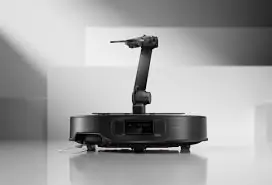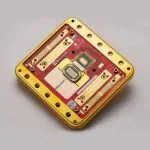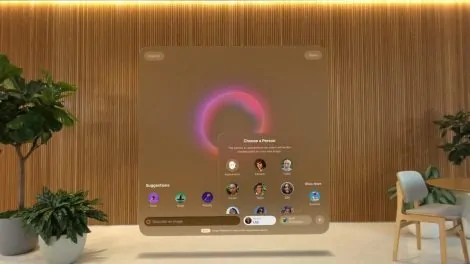The robotics industry has taken another step forward with the introduction of a new robot vacuum capable of picking up small items like socks and underwear while performing its primary cleaning duties. This innovation highlights the ongoing push to address the everyday challenges homeowners face with cleaning automation. By integrating advanced features, this vacuum aims to bridge the gap between traditional cleaning methods and fully automated solutions, making life more convenient for users.

Unlike conventional robot vacuums, which often struggle with obstacles or small, loose items scattered across floors, this latest model is designed to identify, pick up, and remove such objects from its cleaning path. The addition of this capability could resolve a long-standing issue that has frustrated many users of earlier models. The improved functionality not only enhances the cleaning process but also prevents potential damage to the vacuum itself, which could occur when smaller items jam the mechanism.
At the core of this vacuum’s innovative approach lies its object recognition system, powered by advanced artificial intelligence. This system utilizes cameras and sensors to detect objects in its cleaning path. By distinguishing between debris that should be collected and items like socks, which must be set aside, the vacuum ensures a seamless and efficient cleaning process. The recognition system is further enhanced by machine learning, which enables it to improve over time as it encounters different objects in various home environments.
One of the standout features of this robot vacuum is its ability to temporarily store picked-up items in a separate compartment until the cleaning session is complete. Users can then retrieve these items from the compartment, avoiding the frustration of having to search for misplaced belongings. This feature adds an extra layer of convenience, as users no longer need to pre-clean or prepare their spaces before activating the vacuum.
The vacuum’s navigation system is another area where significant advancements have been made. Equipped with a combination of LiDAR and infrared sensors, it can map out rooms in real-time, avoiding obstacles with greater precision. These improvements reduce the likelihood of the vacuum getting stuck or missing areas, ensuring a thorough cleaning experience. Additionally, the system adapts to changes in furniture placement or clutter, maintaining optimal performance even in dynamic environments.
The ability to handle socks and underwear has practical implications for households with children, where such items are frequently left on the floor. It also benefits pet owners, as the vacuum is designed to detect and avoid small pet toys or other non-debris objects. By addressing these common scenarios, the vacuum caters to a broader audience and makes automated cleaning a more viable solution for diverse households.
While this innovation represents a leap forward, it also raises questions about the cost of such advanced technology. Early adopters may face a higher price point compared to traditional robot vacuums. However, proponents argue that the added convenience and functionality justify the investment. The device’s durability and reduced maintenance needs, thanks to its ability to avoid damaging obstacles, may further offset the initial expense.
To better understand the value proposition of this new robot vacuum, a comparison of key features across various models can be helpful. The table below outlines the differences between the new model and two popular competitors in the market:
| Feature | New Robot Vacuum | Competitor A | Competitor B |
|---|---|---|---|
| Object Recognition | Yes | No | Partial |
| Obstacle Avoidance | Advanced (LiDAR + AI) | Basic Infrared | Moderate (LiDAR) |
| Item Pickup Capability | Yes (Small Objects) | No | No |
| Storage Compartment | Yes | No | No |
| Price Range | $600–$800 | $300–$500 | $400–$600 |
The added capabilities of this new robot vacuum make it a compelling choice for households that value convenience and advanced cleaning features. While it may not be the most budget-friendly option, its ability to tackle complex cleaning tasks sets it apart in a crowded market.
In terms of maintenance, the vacuum has been designed with user-friendly features. Its removable compartments and washable filters make cleaning and upkeep simple. Additionally, the device provides notifications for routine maintenance tasks, such as emptying the debris bin or cleaning sensors, ensuring consistent performance over time. These features contribute to the vacuum’s long-term usability, reducing the likelihood of performance degradation.
Environmental considerations have also been taken into account in the vacuum’s design. The device is constructed with recyclable materials and features energy-efficient operation modes, aligning with growing consumer demand for eco-friendly products. By minimizing power consumption and using sustainable materials, the vacuum represents a step toward more responsible manufacturing practices within the robotics industry.
For users who are skeptical about transitioning to this advanced technology, the vacuum includes a manual override mode. This feature allows users to control the vacuum directly, offering reassurance to those who may not fully trust automated systems. By providing this option, the manufacturer aims to ease concerns and encourage adoption of the product.
While the primary focus is on cleaning efficiency and convenience, the vacuum also integrates with smart home ecosystems. Users can control it via smartphone apps or voice commands through popular virtual assistants. This connectivity allows for scheduling, monitoring, and customization of cleaning routines, further enhancing the device’s appeal.
As robot vacuums continue to evolve, this latest model sets a new benchmark for what these devices can achieve. By addressing longstanding challenges and introducing features that enhance usability, it paves the way for more widespread adoption of automated cleaning solutions. For consumers, the decision to invest in such technology ultimately depends on their specific needs and priorities. However, the benefits offered by this vacuum suggest that it could become a valuable addition to many households.
This innovation also reflects broader trends in the robotics industry, where manufacturers are increasingly focused on integrating AI and machine learning into everyday products. As these technologies become more sophisticated, their potential applications expand, promising even greater convenience and efficiency in the future.
In conclusion, the introduction of a robot vacuum capable of picking up small items while cleaning represents a significant advancement in home automation. By combining cutting-edge object recognition, navigation, and storage features, it addresses many of the pain points associated with traditional models. While it may not be the most affordable option, its functionality and convenience make it a strong contender for those seeking a comprehensive cleaning solution. As technology continues to progress, innovations like this vacuum will likely shape the future of automated home care, offering unprecedented levels of efficiency and ease.










Add Comment